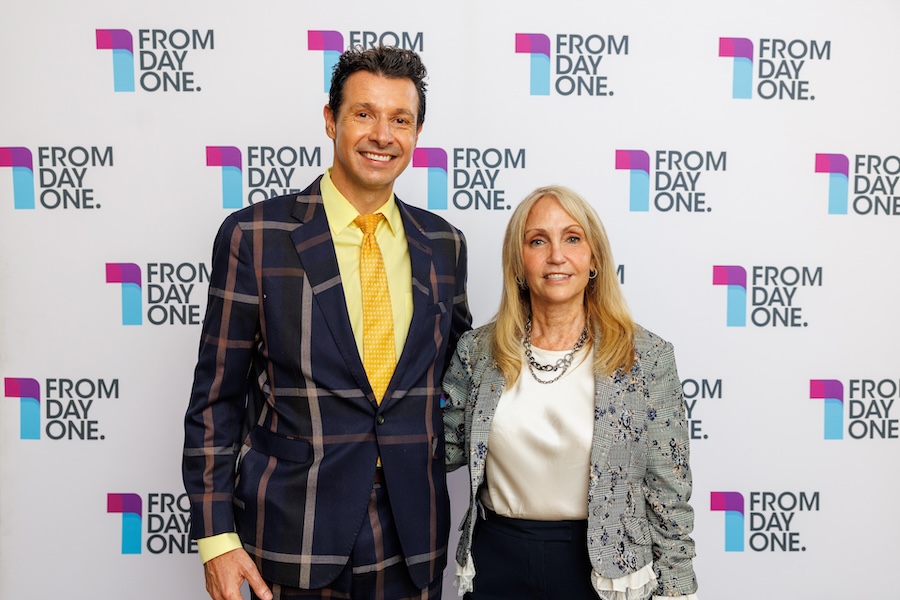How a Company’s Culture Shapes Each Team Member’s Experience


“He’ll be assessed like every other employee. He’ll have a performance review,” joked Zimmer Biomet’s SVP and CHRO Lori Winkler, during her recent fireside chat at From Day One’s Miami conference. She was referring to the company’s recent announcement of Arnold Schwarzenegger's new role as Chief Movement officer. “But I don’t want to deliver it to him,” said Winkler with a laugh.
The role of a celebrity partner may be window dressing for some, but many of Winkler’s comments during the 20 minute discussion, about “How a Company's Culture Shapes Each Team Member’s Experience,” suggest that there is perhaps some deeply shared DNA between the company and their newest C-Suite hire, sharing a level of grit.
Challenging the Return-to-Work Movement
With many business leaders pushing hard for return to office, Winkler articulated a different approach. “What we have enabled and continue to enable is a remote workforce,” said Winkler.
“For the most part, we’ve said you can continue to work from home as long as you remain engaged. And we have very specific tactics for ensuring that. This has been a tremendous competitive advantage for us.”
Winkler broke down some of those tactics, including engagement scoring surveys and site-specific engagement strategies, especially since the company is in 100 countries, globally. She was clear in aligning the efforts to a higher philosophical lens.
“I think a culture transcends whether you’re physically together or not," said Winkler. Culture is connected to the clarity of the company’s mission, to alleviate pain and improve the quality of life for people all over the world, as well as its achievable vision, “to be the boldest med tech company in the world.”

And then, and here is perhaps why Arnold might fit in there, Winkler dug in against companies pushing return to office. “If we looked at the data for these companies that have mandated a return to work, we would see, maybe not right away, attrition rates. And I think that’s happening now: Attrition rates are really rising, because folks have become very accustomed to what was ‘the new normal.’ It’s just the ‘normal’ now,” she said.
AI and Innovative Technologies
Session moderator Paul A. Pavlou, Dean of the Miami Herbert Business School at the University of Miami turned the topic to AI. “In this day and age, I have to ask about AI. There is no conversation without AI. How do you respond to the question from an HR perspective that AI is going to replace jobs?” he asked.
Despite bringing the Terminator into the leadership suite, Winkler’s response suggests that Zimmer Biomet's approach to AI is more gradual and measured. “We have a great talent acquisition department that we just brought in house,” she said. “And I would say that we are not leveraging AI to look to its full potential yet, so we have not yet had to deal with that question.”
The company instead is focused on safety and security concerns in regard to AI. “To be very frank, there’s more concern around security and confidentiality when it comes to AI. That’s more of the conversation that I hear in my organization.”
Although much of the conversation focused on technology, Winkler made sure to tie things up with a human element. “I’ve come to learn this both really personally, but I try to bring it through to my professional life: stay true to who you are and lead from your heart,” she said. “Authenticity and being a human-based leader makes all the difference. So bring that caring and that love into the workspace, because it makes a huge difference, especially now.”
Chris O’Keeffe is a freelance writer with experience across industries. As the founder and creative director of OK Creative: The Language Agency, he has led strategy and storytelling for organizations like MIT, Amazon, and Cirque du Soleil, bringing their stories to life through established and emerging media.
The From Day One Newsletter is a monthly roundup of articles, features, and editorials on innovative ways for companies to forge stronger relationships with their employees, customers, and communities.